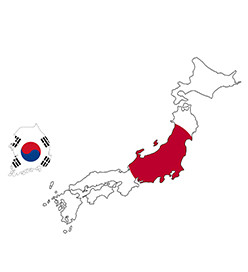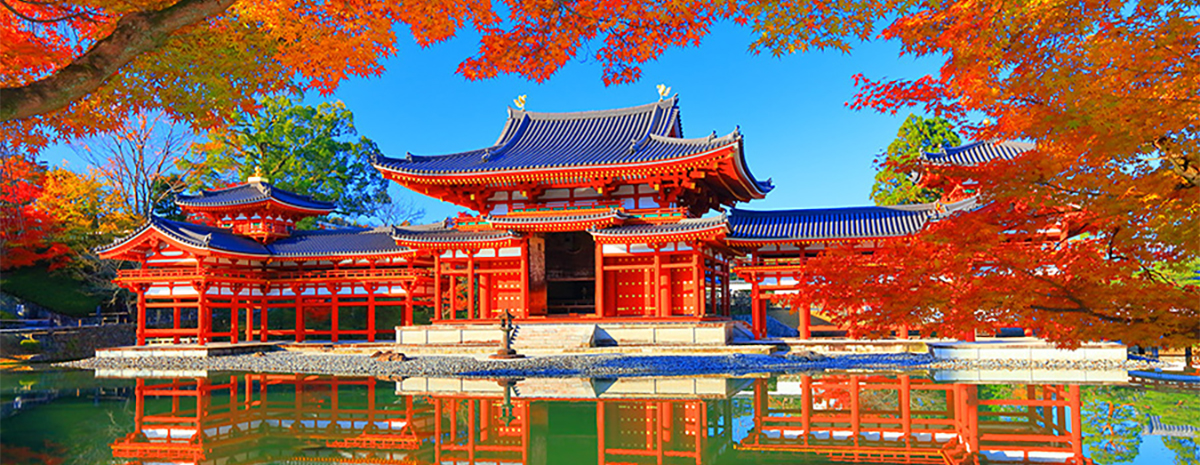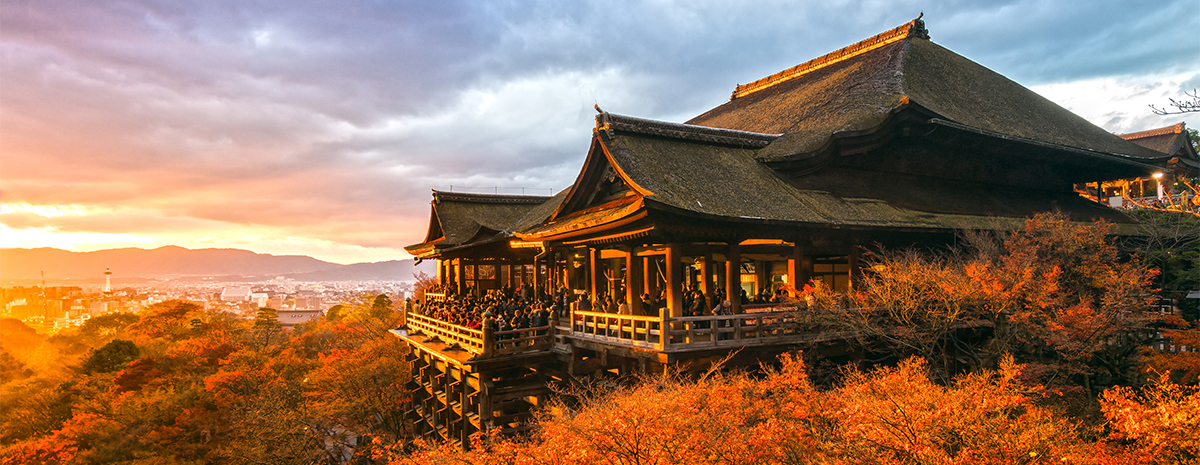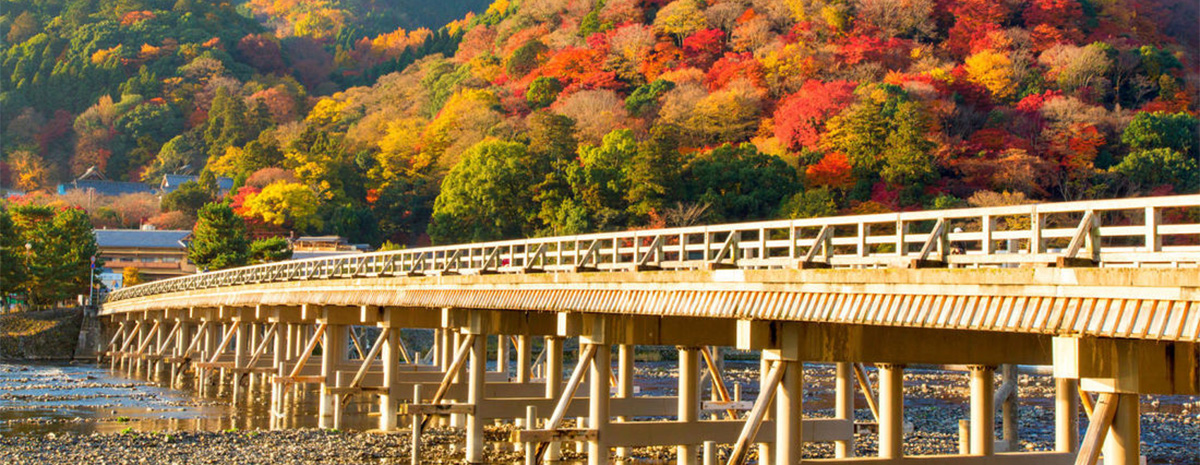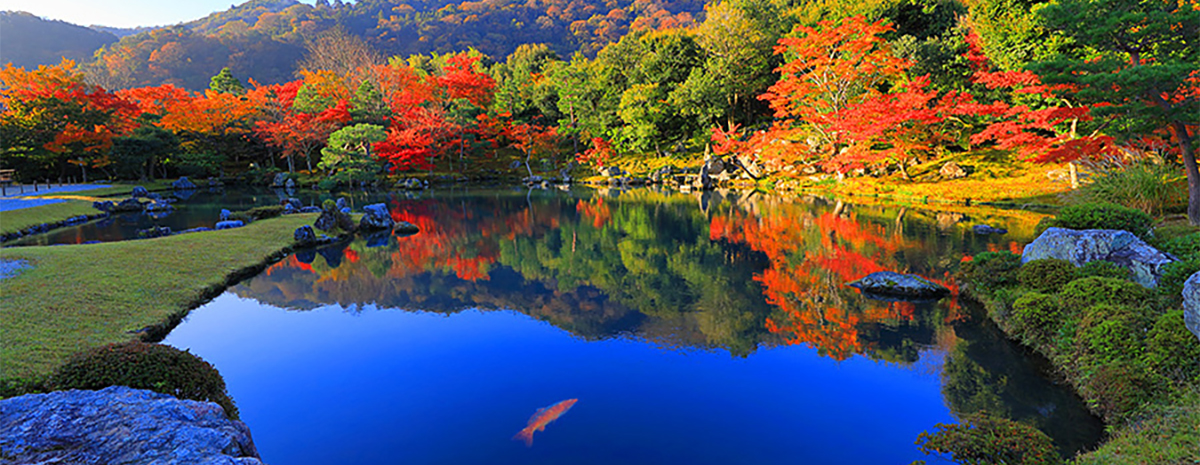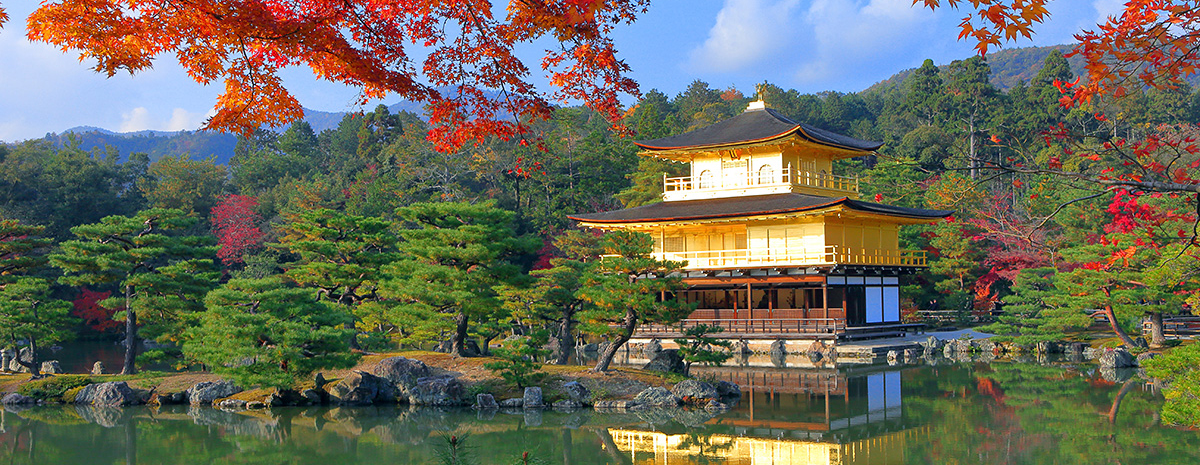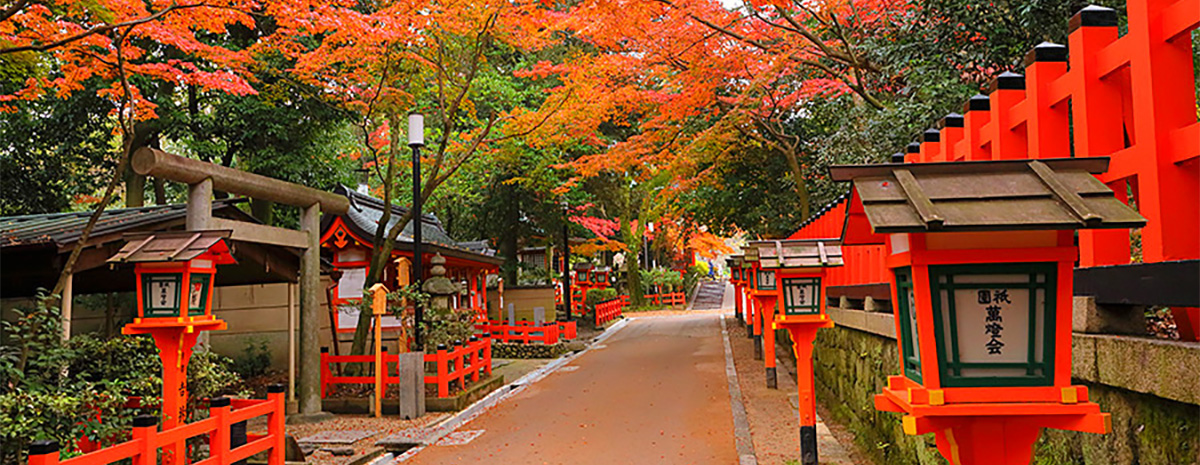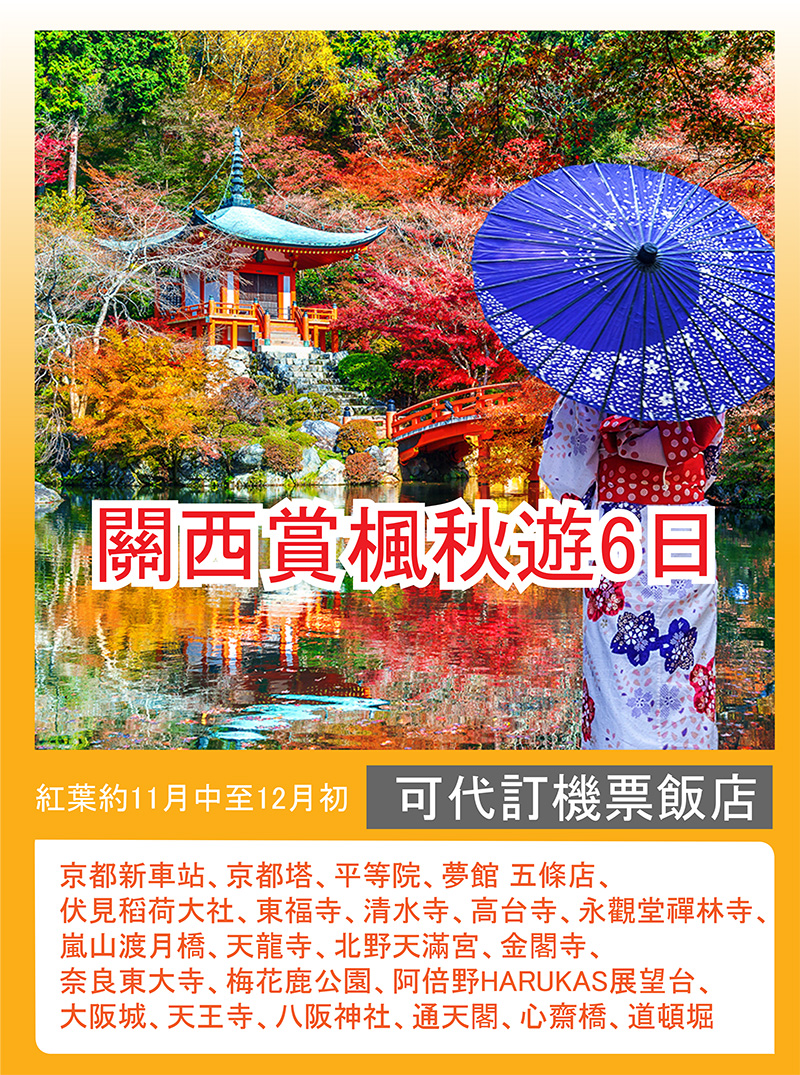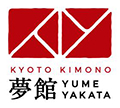Kansai Fall Foliage 6 days tour
 |
 |
 |
 |
Kansai Fall Foliage 6 days tour
Autumn Leaves Mid Nov - Early Dec
Can help to book air tickets and hotels
Flight to Kansai International Airport suggest schedule
| Airline | Flight Departure Number | Departure Time | Flight Arrival Number | Arrival Time |
 |
CI 152 | 09:50 | CI 153 | 14:30 |
 |
BR 132 | 08:30 | BR 131 | 12:55 |
 |
JX 820 | 07:40 | JX 823 | 14:00 |
| Itinerary | ||
| Item | Place of accommodation | |
| Day 1 | Kansai International Airport > Byodo-in Temple > Kyoto Station > Kyoto Tower | Stay in Kyoto Hotel |
| Day 2 |
Kimono Rental Yumeyakata Gojo Shop > Fushimi-Inari Taisha > Tofukuji > Kiyomizu > Kodaiji > Eikando (Zenrinji Temple) |
Stay in Kyoto Hotel |
| Day 3 | Togetsu-kyo Bridge > Tenryuji > Kitano Tenmangu Shrine > Kinkaku-ji |
Stay in Kyoto Hotel |
| Day 4 | Nara Todaiji > Nara Park > Abeno Harukas Observatory | Stay in Osaka Hotel |
| Day 5 | Osaka Castle > Tennoji > Tsutenkaku > Shinsaibashi > Dotonbori | Stay in Osaka Hotel |
| Day 6 |
Kansai International Airport > Taoyuan International Airport |
Back to home |
Japan Autumn Leaves Forecast

Photo by:tenki.jp
Japan Private tour price and customized itinerary
https://tttrips.com/theme/chartered_car/40
Now through booking in
橘子貓TTtrips
Japan Private tour price and customized itinerary
“Kimono Rental Plan”
Enjoy 20% off
Byodo-in Temple
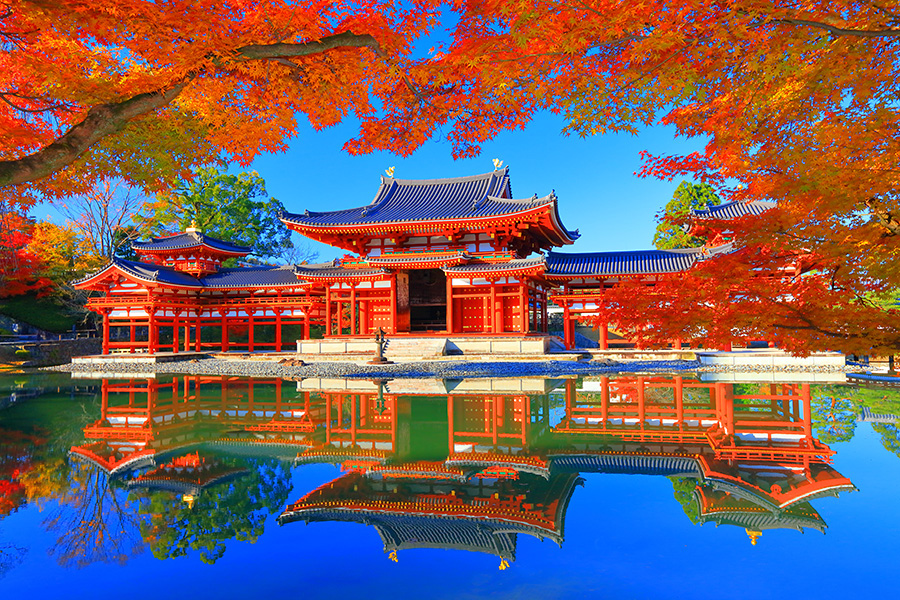
It was originally the villa "Ujiden" of Fujiwara Michizane, a nobleman in the Heian period. In 1052, Fujiwara Yorimichi, the son of Fujiwara Michijo, converted it into a temple and created "Byodo-in Temple". In 1053, the "Amitabha Hall (Phoenix Hall)" celebrated its completion, enshrining the wooden seated Amitabha statue made by the Buddha sculptor Dingchao. This "Amitabha Hall" was built on the middle island of Aji Pond, and it is said that it embodies the pure land of Western Paradise. It is a valuable building that preserves the gorgeous culture of the late Heian period. In 1994, it was registered as a World Cultural Heritage by UNESCO as one of the "Cultural Assets of Ancient Kyoto".
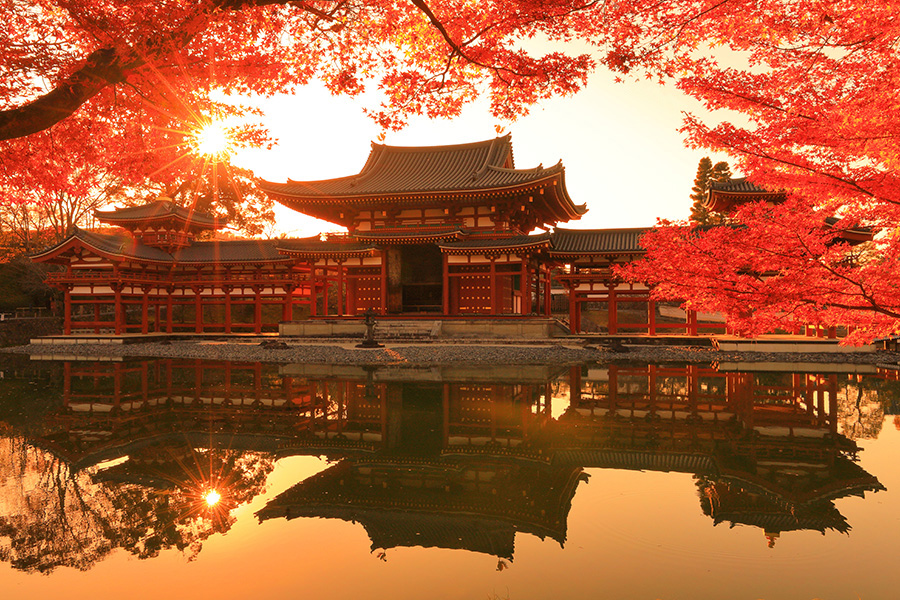
Fushimi-Inari Taisha
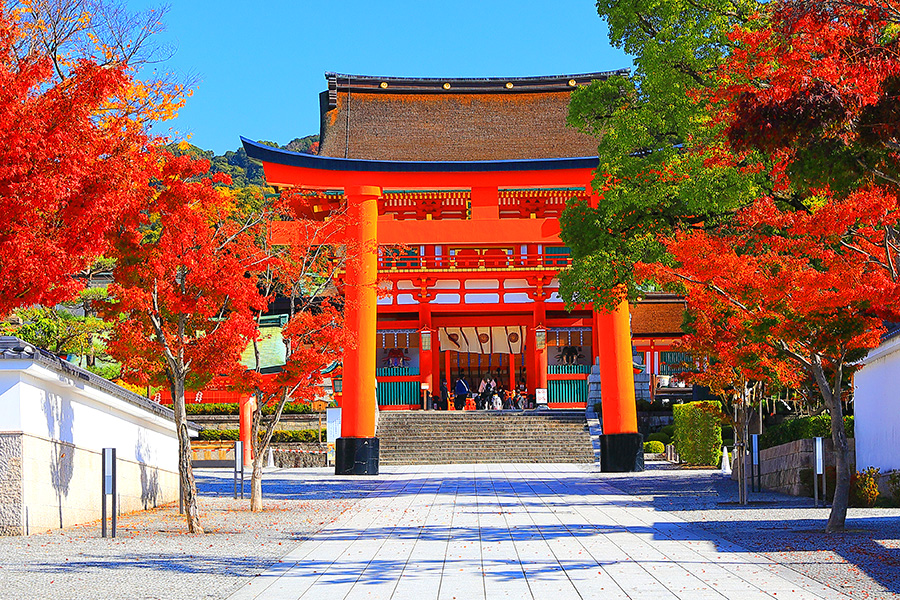
"Fushimi Inari Shrine", built in 711 AD, is located on Inari Mountain at the southernmost tip of Higashiyama's 36 peaks. Known as the "Inari God" by another name, he blesses the harvest, business prosperity, industrial prosperity, family safety, traffic safety, and the improvement of performing arts. Fox statues of Inari God's messengers are placed around the grounds. It is famous for its thousands of torii gates painted in vermilion, attracting a large number of pilgrims from Japan and abroad. The shrine covers an area of 870,000 square meters, covering the entire Inari Mountain and is quite vast. There are many mizukas in Mount Inari. After passing through the Senbon Torii and the Okusha Shrine, you can go to the Mizuka in the mountains to pay homage along the "Oyama Pilgrimage" route of about 4 kilometers.

Tofukuji
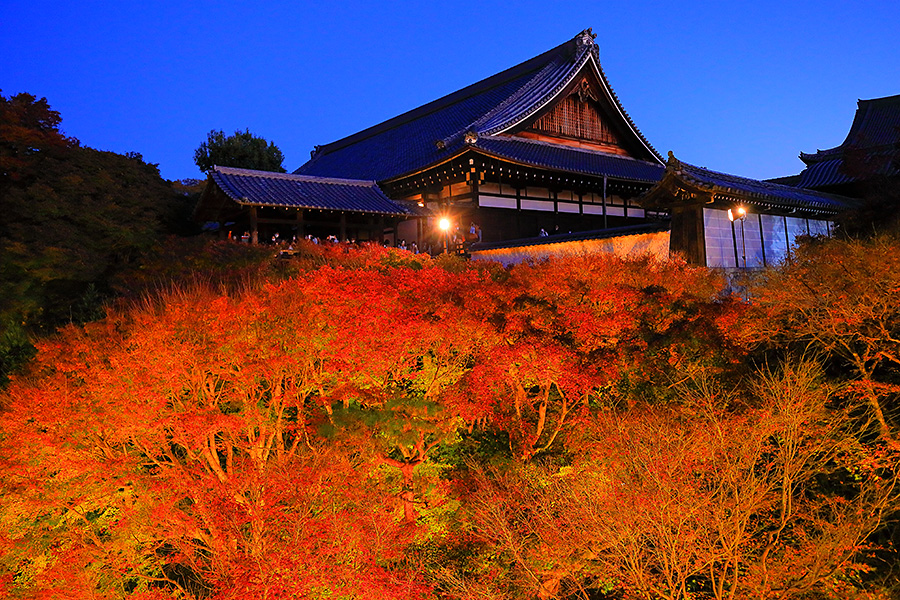
The name "Tofuku-ji Temple" is derived from the two scripts of Todai-ji Temple and Kofuku-ji Temple in Nara. It retains many cultural heritages such as the oldest surviving three gates, and attracts many people to visit here.
The "Tsuten Bridge" in Tofukuji Temple is a good place to enjoy the red leaves. The maple leaves start to turn red around mid-November, and the best time to appreciate the red leaves is from late November to early December. Looking from the Tsuten Bridge, it looks like a sea of red leaves and clouds. I seem to be in the air, entering a different dimension world.
Kiyomizu
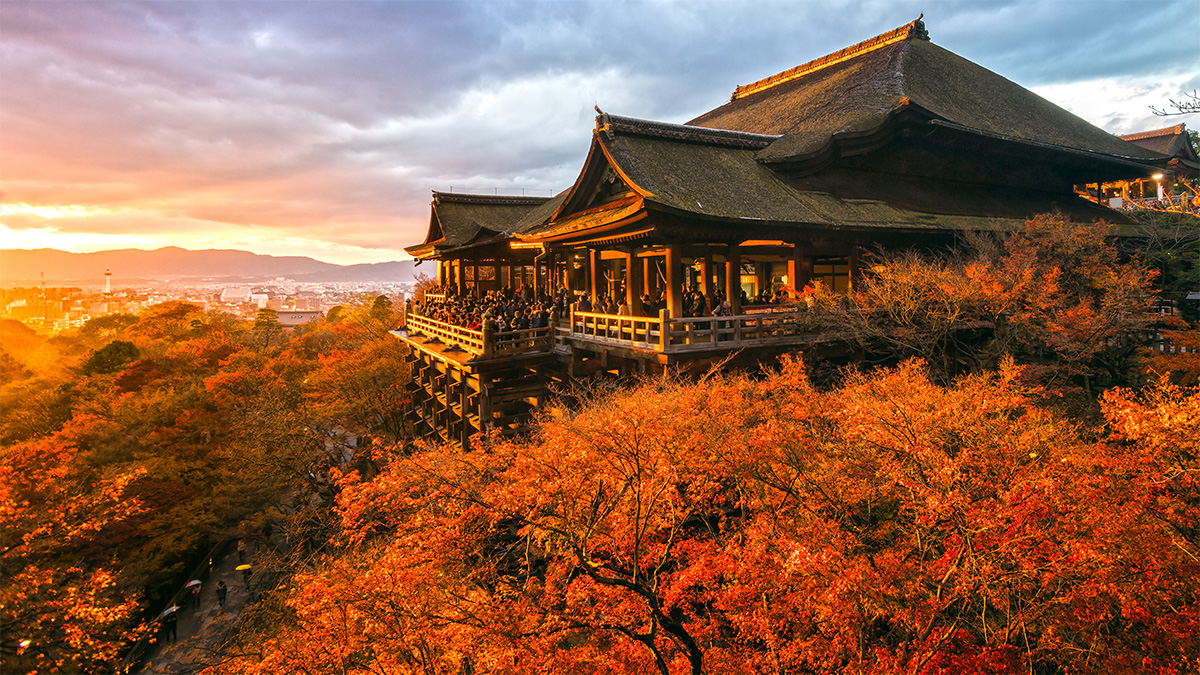
From "Kiyomizu Temple", you can see the Higashiyama area full of ancient capital style. Get off at the nearest Keihan Railway "Kiyomizu Gojo Station" and walk east for about 25 minutes to reach Kiyomizu Temple. It is also very close to the famous Ninenzaka and Sannenzaka. It has been loved by domestic and foreign tourists for a long time, and it is definitely included in the must-visit temples in Kyoto.
If you want to enjoy the red leaves in Kiyomizu Temple, you can look out from the main hall of "Shimizu Stage (清水の台)" built on a high platform, and feel the fresh air. It is completely the classic "Autumn in Japan", known as Jinyun Gorge The carpet of red leaves spread out, and the scene in front of you is breathtakingly beautiful.
Eikando (Zenrinji Temple)
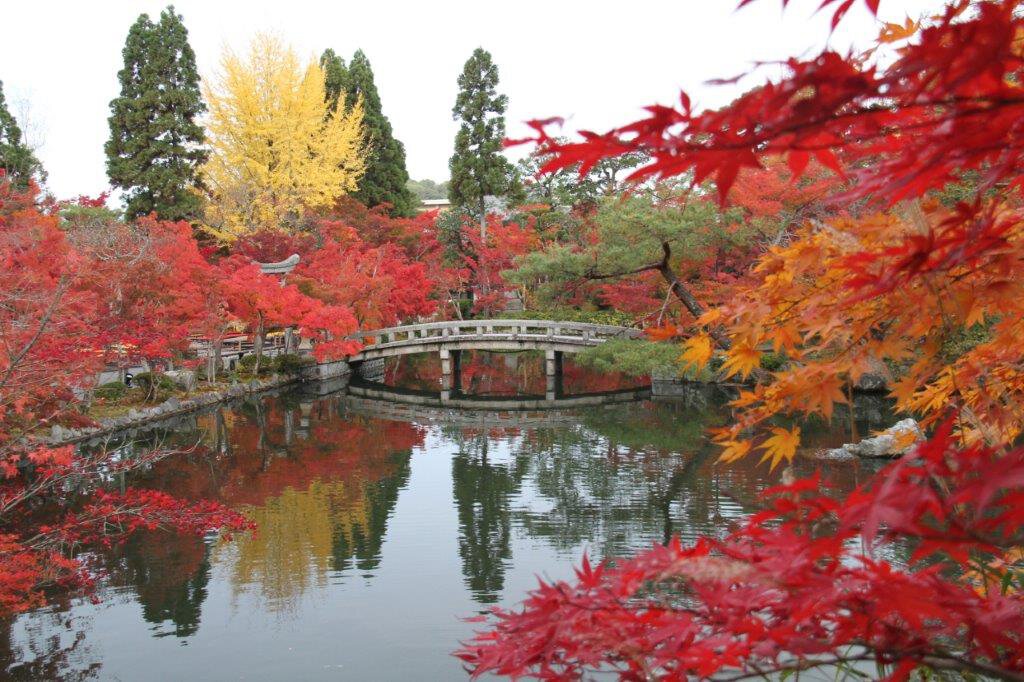
From the way of philosophy, go south to "Zenrinji Temple (永観堂先林寺)". It can be seen how famous the maple viewing is. It takes about 3,000 A maple tree adorns "yagura tower" and the surrounding gardens, like a painting, and many waka poets have praised its beauty.
Yagura tower is located at the highest point in the Eikan-do courtyard, with a full view of the scenery outside of Kyoto, accompanied by the beautiful red leaves to spend a good time~ During the red leaf period (early November to early December in previous years), there is a lighting event every year, enjoying a romantic night .
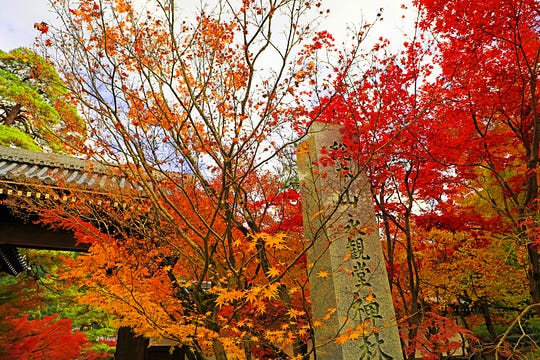
Togetsu-kyo Bridge
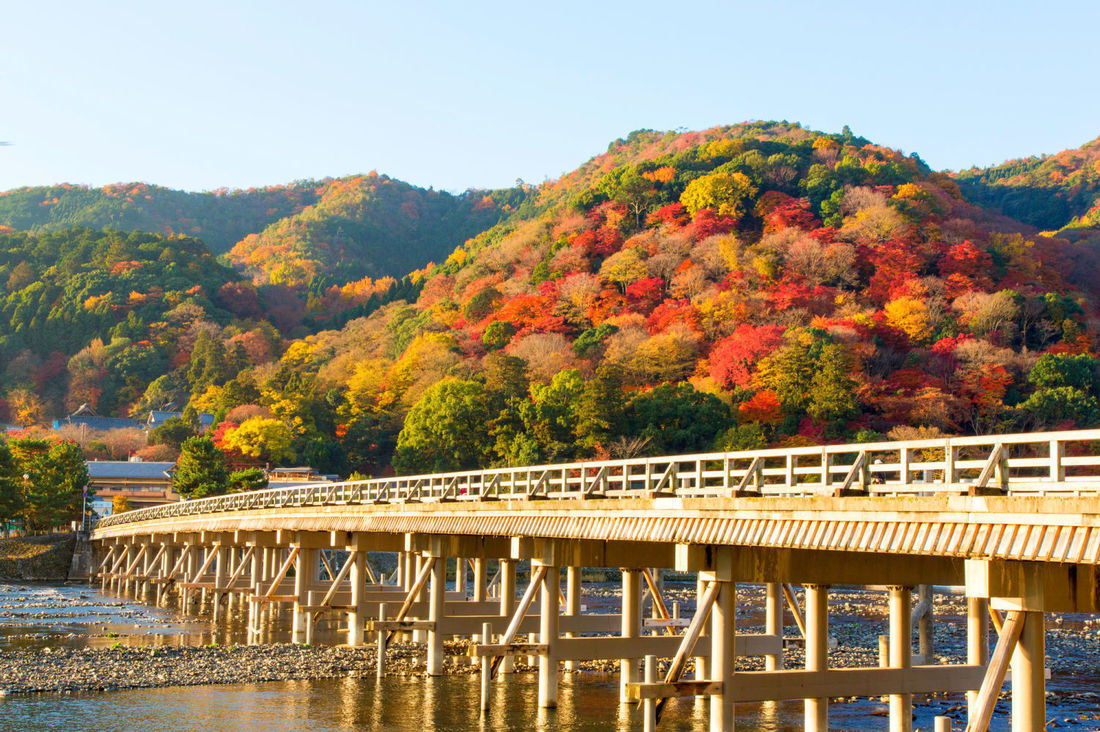
Arashiyama is located in the Nishiyama area at the western end of Ukyo-ku, centered on the Togetsukyo Bridge over the Katsura River.
From mid-November, the maples and ginkgoes in Arashiyama turn red or yellow, which has a very different feeling from the new green season. Many people like to use the colorful mountain scenery as the background when taking pictures, with the Togetsukyo Bridge in front of them. Such images can be easily found on various social network SNS.
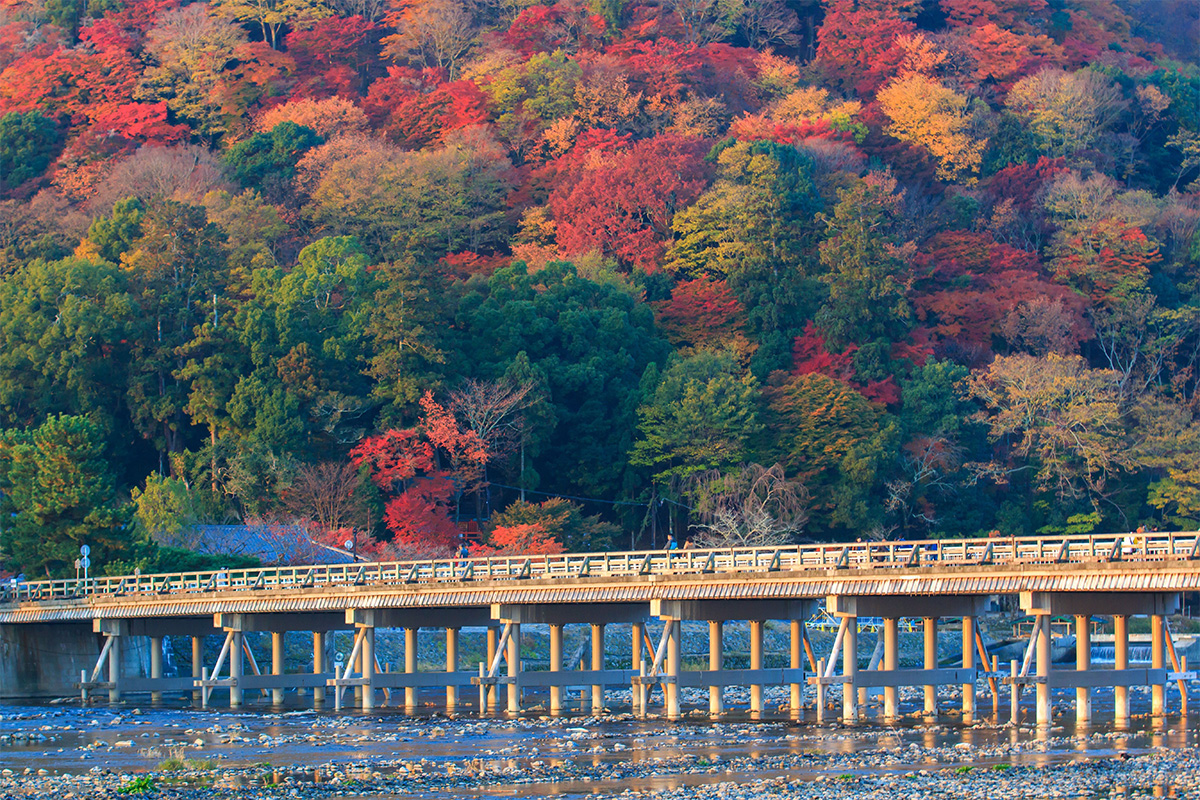
Kinkaku-ji
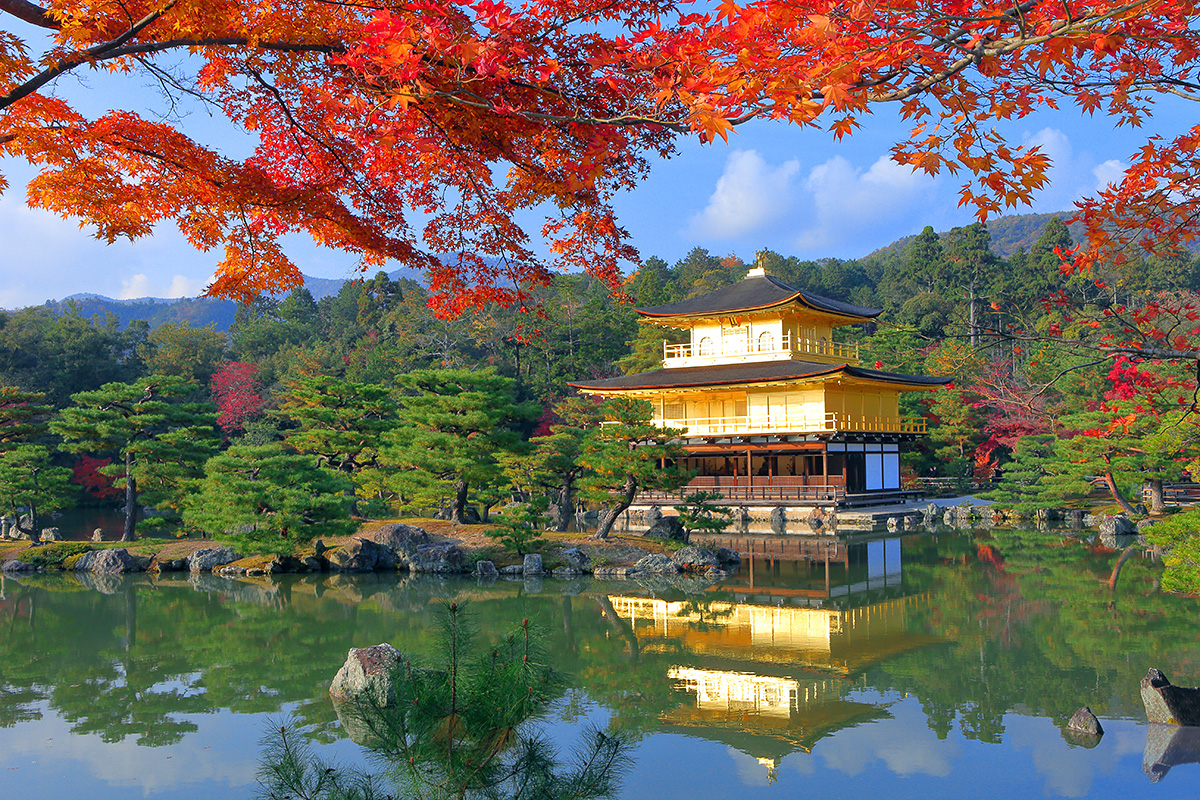
Rokuonji,also known as Kinkaku-ji Temple, is a Japanese Buddhist temple that was first completed in 1397. It is located in the northern district of Kyoto City, Kyoto Prefecture. The third-generation shogun Ashikaga Yoshimitsu's dharma name, and because the outer walls of the core building of the temple, the "Relic Hall", are all decorated with gold leaf, it is also called "Kinkaku-ji Temple".
Nara Todaiji

In addition to temples such as Todaiji Temple, Kofukuji Temple, and Kasuga Taisha Shrine, cultural facilities such as the Nara National Museum and the Nara Kasugano International Forum are all adjacent to the park. In the park, there are 1,300 deer, which are regarded as the messengers of the gods of Kasuga Taisha, inhabiting it. You can feed the deer senbei to the deer, which is very popular among tourists.
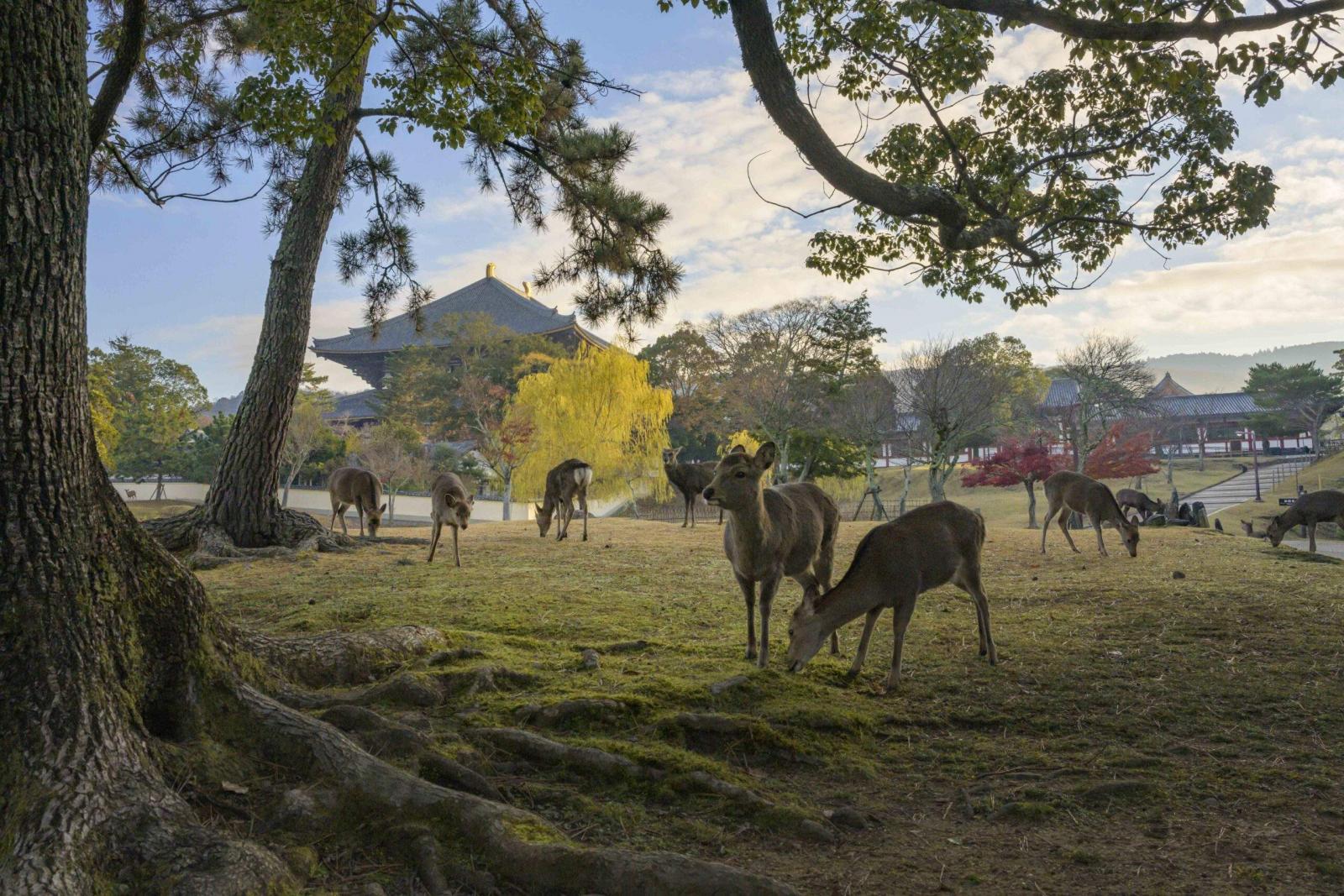
Osaka Castle
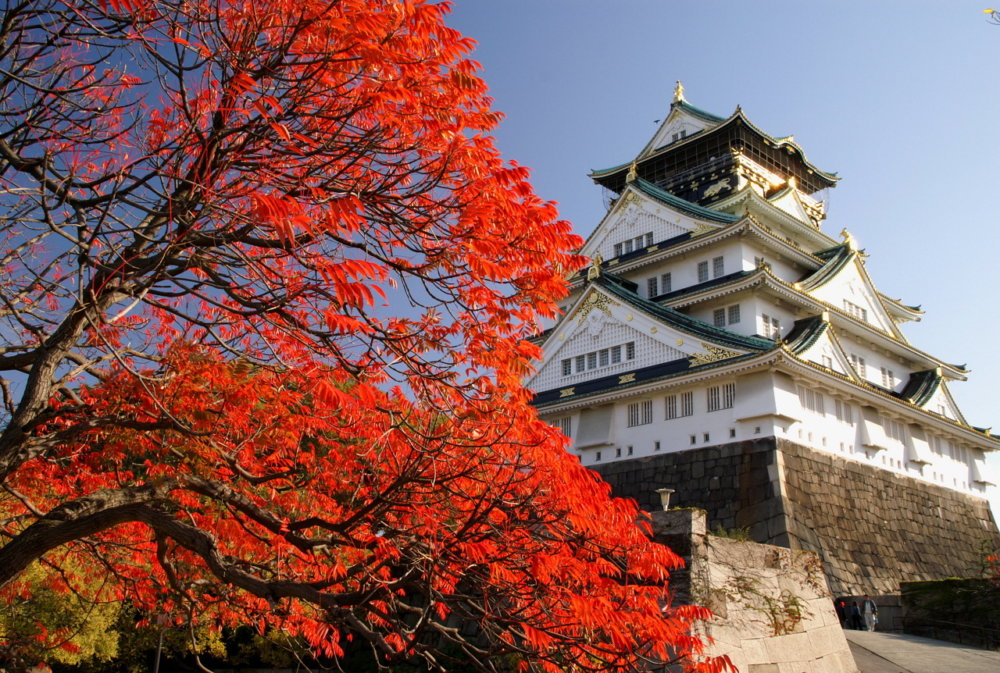
The red leaves viewing place in Osaka Castle is "Nishinomaru Garden (西の丸庭園)" on the west side. The whole red leaves in the wide garden are very atmospheric. Osaka Castle stands among about 300 cherry trees whose leaves turn red, exuding natural calmness beauty.
There is also a Ginkgo Avenue about 1km long on the east side of Osaka Castle. Walking under the yellow ginkgo trees, you feel unexpectedly calm. You can enjoy the Osaka Castle Castle and the garden scenery at the Honmaru Square "Japanese Garden". Every time the red leaves come, the scenery becomes more beautiful level. The autumn leaves season in Osaka Castle Park falls between early and late November. With the castle tower as the background, it is paired with beautifully colored ginkgo and zelkova. If you have the opportunity, you must go there yourself.

Tennoji
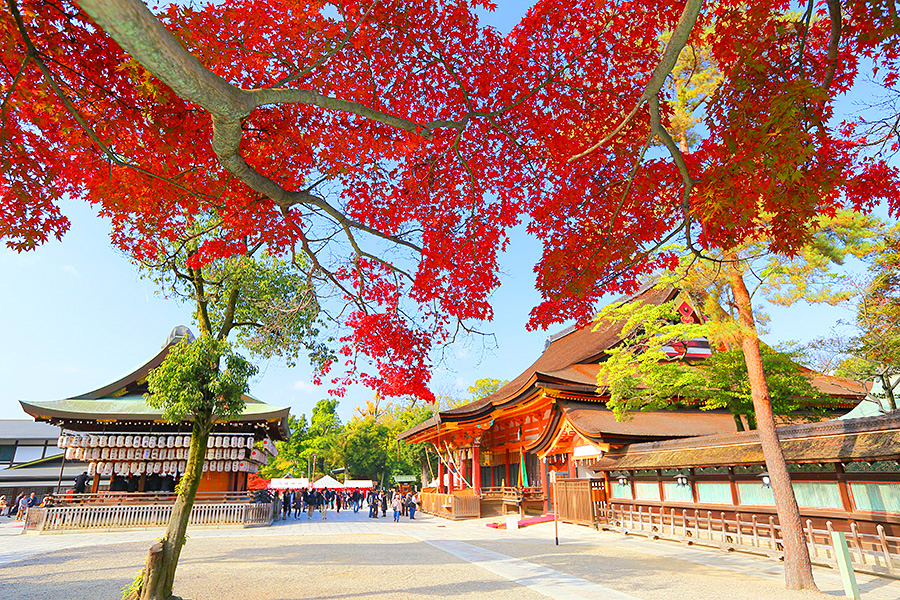
You may hear locals affectionately refer to Yasaka Shrine as Gion Shrine. The red gate towering on the west side of Gion is perhaps the most iconic and photogenic image of the shrine. Pass through the vermilion gate and enter the heart of the shrine, which features an impressive hall of worship and a center stage with lanterns.
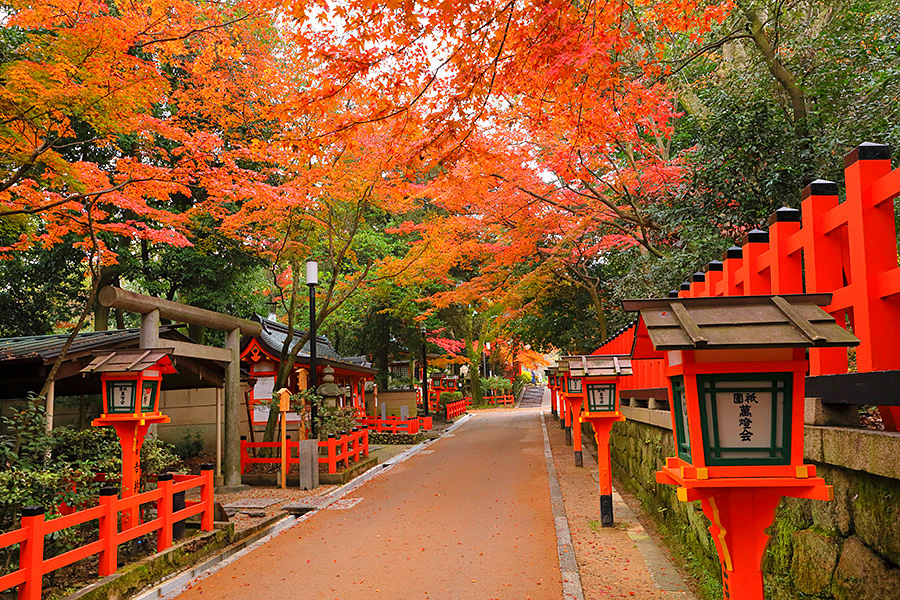
Source by:
https://www.jwa.or.jp/news/2023/09/21145/
橘子貓旅遊及包車討論區


